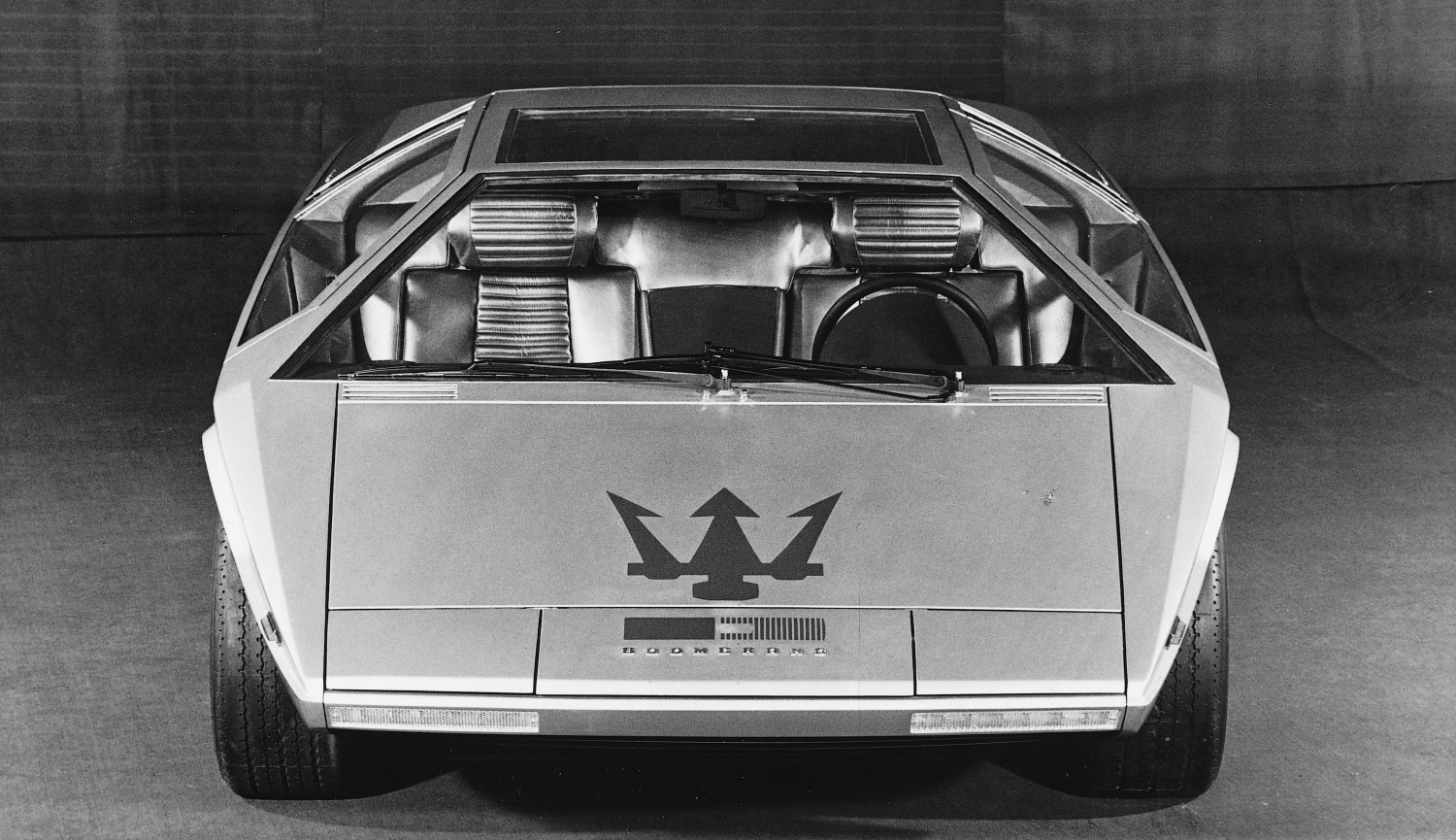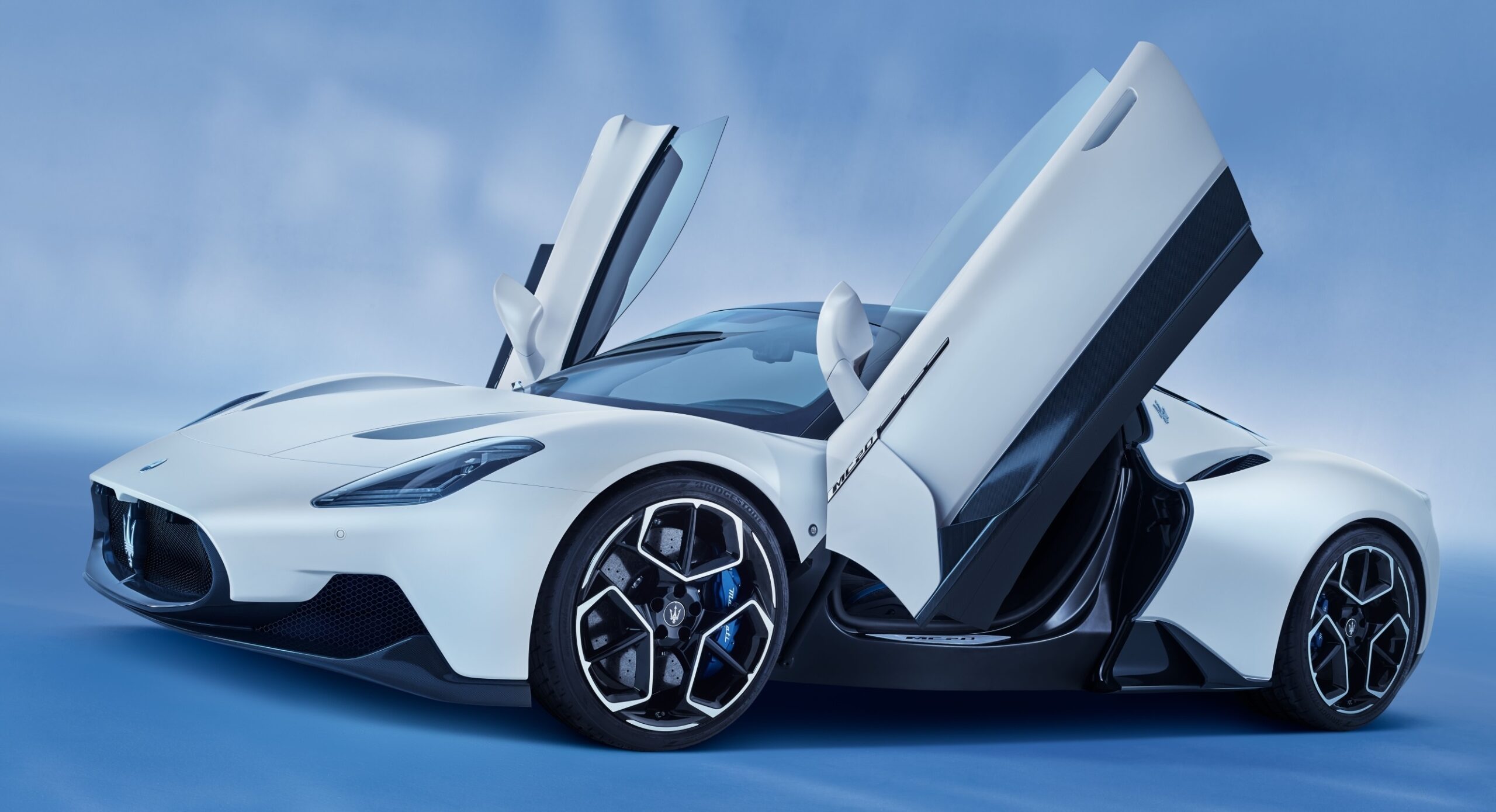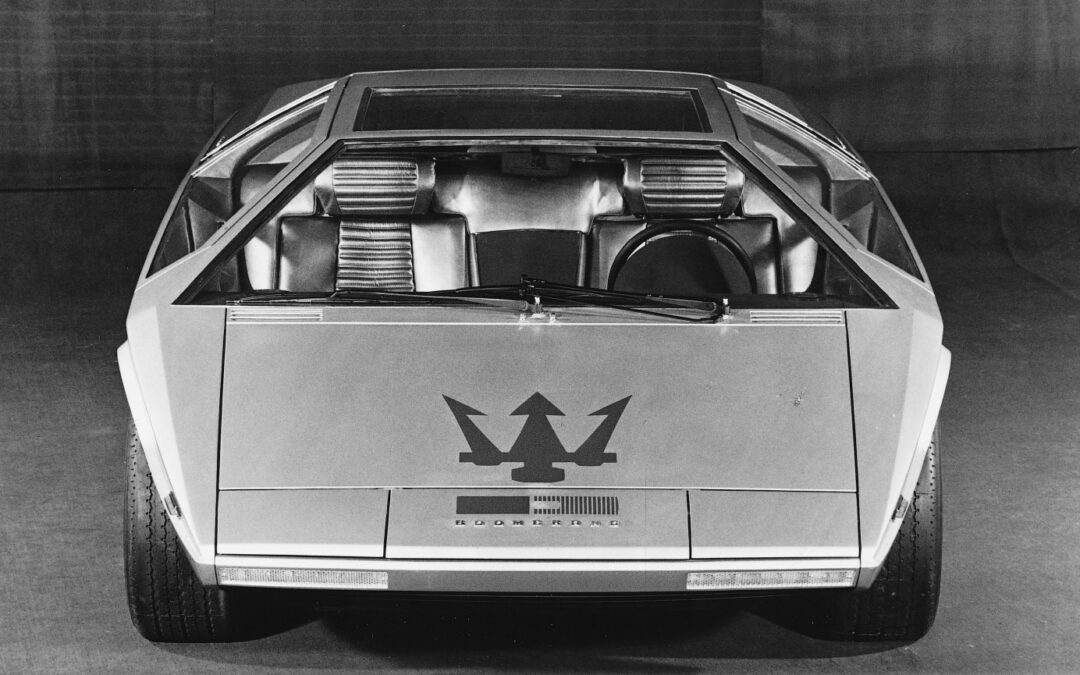
The 1972 Maserati Boomerang concept conveyed an image of penetration, power and speed. (Photos courtesy of Maserati)
The Maserati Boomerang concept defined Maserati as a brand of iconic and avant-garde cars that pioneered technology and style
A half century has passed since the Maserati Boomerang debuted at the Geneva Motor Show on March 9, 1972. It was a one-off concept created by the renowned Giorgetto Giugiaro and produced by Italdesign. Only one car was ever produced.
The Maserati Boomerang concept made an appearance at the 1971 Turin Motor Show. And it was presented at the Geneva motor show in 1972 as a registered vehicle that ran perfectly, Maserati said in a release.
Italdesign started with the Maserati Bora for the Boomerang’s chassis and mechanics. The powertrain was a rear-mounted, 90-degree 4.7-liter V-8 engine. Channeled through a five-speed ZF manual gearbox, the 310-hp Bora would have a top speed of almost 186 mph (300 km/h).

The Maserati Bora.
The two-seat Maserati Boomerang sports coupé never went into production. But its stylistic legacy continued Giugiaro’s later creations. And it was inspiration for other automakers in Europe and the United States.
The influence of the Boomerang’s wedge shape can be seen in the 1973 Audi Asso di Picche concept, 1973 VW Passat Mk1, 1974 VW Golf Mk1, 1976 Lotus Esprit and Medici II show car, 1979 Lancia Delta and Maserati Quattroporte III, and 1976 designed and 1981 launched DeLorean.

The Maserati Bora was used for the Boomerang’s foundation.
Design Elements
The originality of the Maserati Boomerang was in its wedge shape and bold lines. The stance conveyed an image of penetration, power, and speed.
Stylistically, a horizontal line divided the Boomerang in two with a sloping windscreen and a panoramic sunroof. The original windows of the doors were divided by a metal strip. And the retractable square headlamps stood out, with horizontal lights in the rear.

The Boomerang’s dashboard instruments were built into the spokeless steering wheel and the wheel rotated around the stationary gauges.
The interior was extremely modern and introduced fresh ideas. For example, the dashboard instruments were built into the spokeless steering wheel, and the seats were positioned very low.
The one production version of the Boomerang made other appearances in international competitions. It would change hands between various owners, and ended up as the feature car in a number of auctions; it was even used in commercials.
Considered by many to be a work of art, the Maserati Boomerang was revolutionary and influenced the designs of successive cars. It continued to define Maserati as a brand capable of creating unique automotive concepts, iconic and avant-garde cars that acted as pioneers of technology and style.

The Maserati MC20 supercar.
The Future for Maserati
Now more than ever, Maserati is unique for its design and innovation. It is moving forward with the new Grecale SUV and the 621-hp, MC20 super sports car. The 2022 MC20 debuts Maserati’s in-house designed new 3.0-liter V-6 Nettuno engine that applies F1 technology for a road car. MC20 pricing starts at $212,000.

Details for the Maserati Grecale small SUV will be released March 22.


